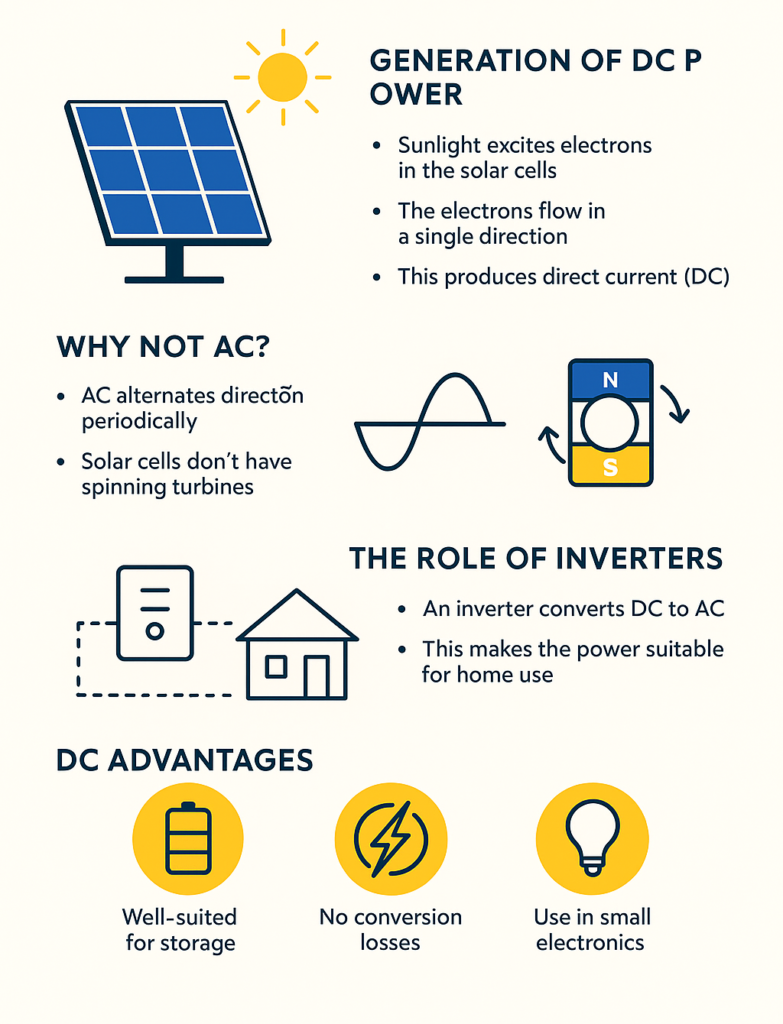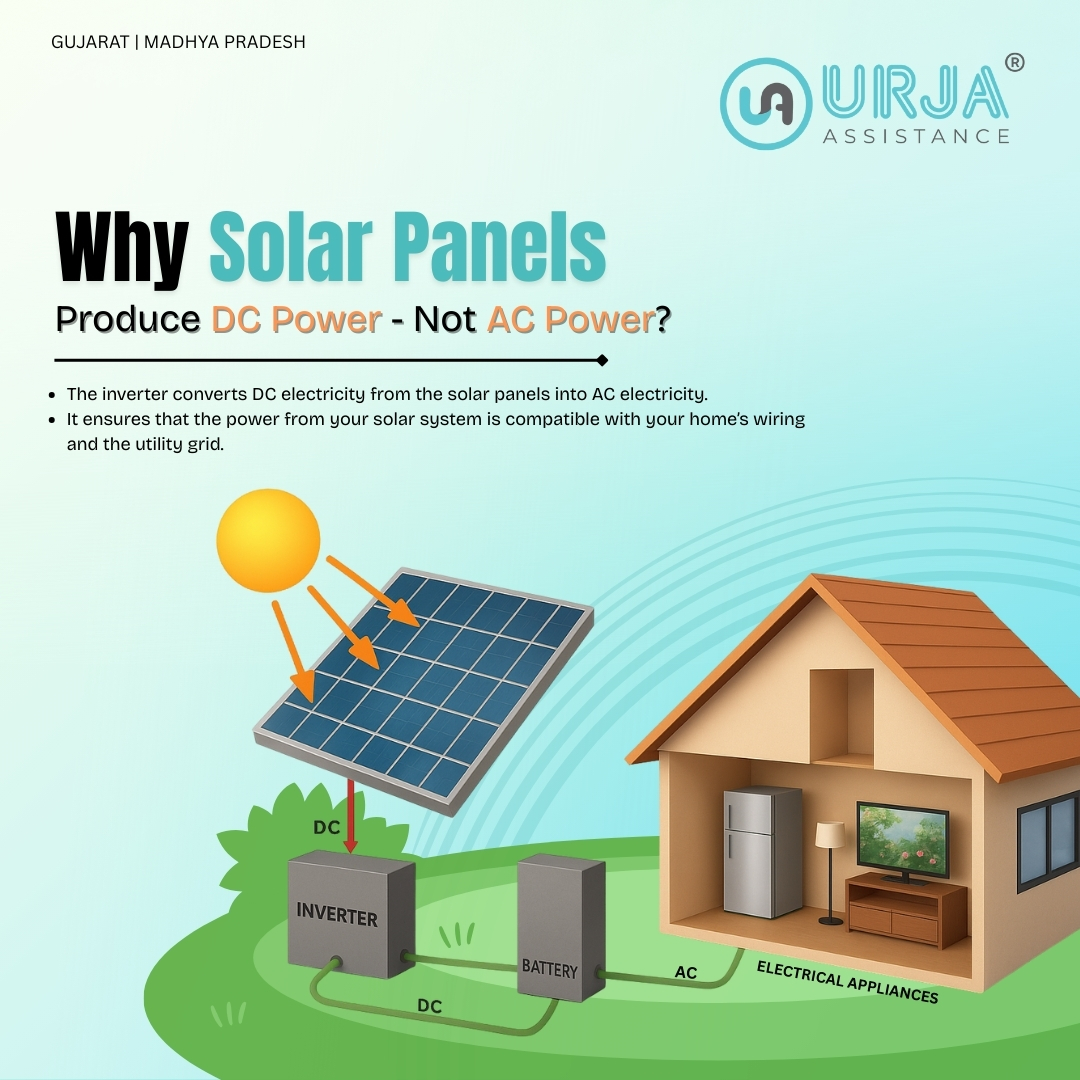Solar energy is everywhere these days — on rooftops, in fields, and powering everything from streetlights to factories. But have you ever wondered why solar panels produce DC (Direct Current) instead of AC (Alternating Current)?
Let’s break it down in simple terms.
The Nature of Solar Energy Generation
Solar panels are made up of photovoltaic (PV) cells, most commonly using silicon. When sunlight hits these cells, it causes a reaction at the atomic level. Here’s a simplified explanation of what happens:
- Sunlight excites electrons in the silicon.
- These excited electrons begin to move in one direction, creating a flow of electricity.
- This one-directional flow is what we call direct current (DC).
So, it’s not a matter of design choice — it’s a natural outcome of how solar cells work.

Why Not AC?
To understand why solar panels don’t produce alternating current (AC) like the electricity in our homes, we need to understand what AC is.
- AC power changes direction many times per second (in most countries, 50–60 times).
- This type of current is generated using mechanical alternators — spinning turbines with magnets and coils.
Solar cells don’t spin. They don’t have magnets or coils. They just absorb sunlight and push electrons in one direction. There’s no mechanism inside a solar panel that reverses the direction of current.
That’s why solar panels naturally generate DC, and not AC.
The Role of Inverters
But your home runs on AC, right?
That’s where a device called an inverter comes in.
- The inverter converts DC electricity from the solar panels into AC electricity.
- It ensures that the power from your solar system is compatible with your home’s wiring and the utility grid.
Without inverters, solar electricity would be incompatible with most modern appliances and infrastructure.
DC Has Its Advantages
While the world mostly runs on AC, DC power has its strengths — especially when it comes to solar:
- More efficient for storage: Batteries store and supply DC, making solar + battery systems simpler.
- Fewer conversion losses: Some off-grid systems use DC directly for maximum efficiency.
- Ideal for small-scale electronics: Solar-powered gadgets and lights often use DC directly.
Conclusion
Solar cells generate DC power because of the way they harness sunlight at the microscopic level. It’s a direct conversion from light to electricity, with no moving parts and no alternating mechanism.
While AC dominates our electrical infrastructure, it’s the quiet, steady DC power of the sun that drives the renewable energy revolution — converted by inverters into the form we use every day.
“Next time you see a solar panel, you’ll know: it’s silently generating direct current, one photon at a time.”
For More Detail, Please Check Our Website: www.urjaassistance.com

